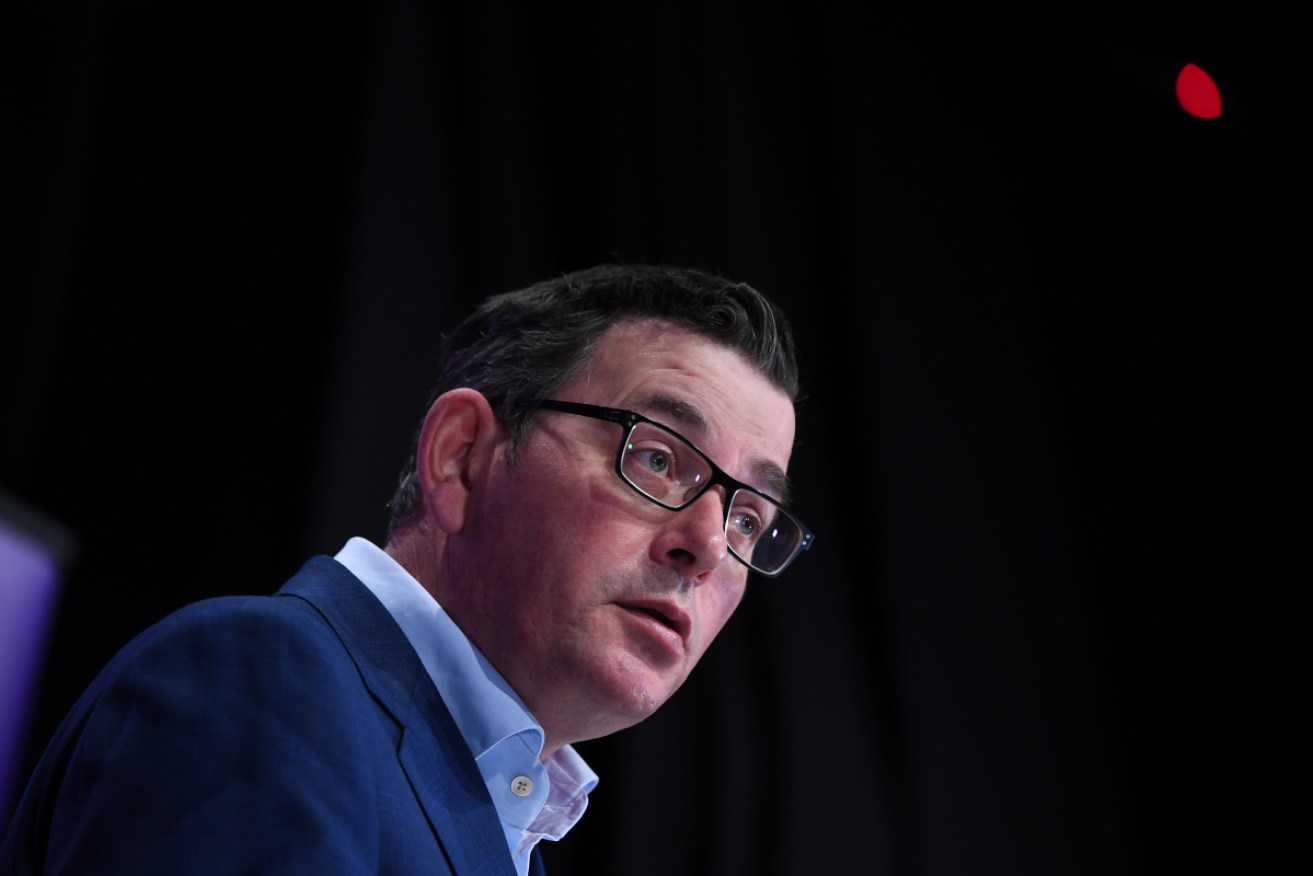The federal government released its COVID-19 modelling, so why won’t Victoria?


The Victorian government won't release its modelling. Photo: AAP
It’s the basis for every decision made during the pandemic.
Inside the Victorian government, some of the nation’s best epidemiologists and infectious disease experts collate data around the virus spread and model where it will go, and how quickly it will get there.
But it’s a tightly held secret.
In April, the federal government was hounded by academics, health professionals and the public for not releasing the modelling they were basing every decision on. It is the maths of life and death.
Relenting under pressure, Prime Minister Scott Morrison ‘unlocked’ the data, and took Australians through a large swath of graphs.
And some believe the Victorian government should do the same.
“At the moment, they release the count per day, the death data by sex and age by day, and weekly they release the count by postcode,” said University of Melbourne epidemiologist Tony Blakely.
The data available to the public alone could be more in-depth, with daily counts by sex, age and postcodes, Professor Blakely said.

The modelling is behind every decision the state government makes. Photo: AAP
“Australia has a culture of guarding data that is, frankly, ridiculous. We’ve seen that everywhere. The level of data access is woeful compared to other OECD countries,” he said.
In the UK, their COVID-19 data is already linked up and available for researchers.”
The modelling behind the curfew, what the state’s case numbers are expected to be by the end of lockdown, how long tests take to get back, and the average time it takes a contact tracer to link two cases are all unknown to the public.
The reason for this is two-fold: They’re busy, and they need to control the narrative, Professor Blakely said.
“First, they’re so pushed at the moment in emergency mode, which is fair enough to some extent.
“Second is the whole culture of guarding data creates a situation where governments are reluctant to release things.
“It’s time-consuming – and risky – to provide modelling.”
Pointing to a recent article on the front page of The Australian as a key example of what happens when modelling is presented out of context, Professor Blakely said misinformation can have severe consequences.
Tweet from @slpng_giants_oz
“Nevertheless, when you have the Victorian population in a stage four lockdown, I think there is a need to be transparent about the information guiding those decisions. We should be seeing more.”
Professor Catherine Bennett, chair of epidemiology at Deakin University, has become renowned for doing her own modelling.
At the end of June, Victoria’s r0 hit 1.7, meaning for every 100 people getting sick 170 more will catch COVID-19. The public knew what the r0 was because Professor Bennett’s modelling showed them.
She said the government would be running multiple models that change all the time. And while they help guide decision making, they’re not crystal balls.
“It happens within parameters,” professor Bennett said.
“You can never predict what’s going to happen because those parameters in your model are things you’ve had to make assumptions on. It’s ‘best estimates’. You cant’ predict the future.”

The modelling behind Victoria’s curfew has not been made public.
The government could find a ‘middle ground’ by explaining some of the modelling to the public, she said, adding “there is a risk people will oversimplify it or they’ll see there is uncertainty, but that’s why we model.”
The most important thing though, is that the government does a detailed analysis of each decision after stage 4 to find out what worked and what didn’t.
“It’s evaluating in detailed analysis which components of the lockdown work, that helps you map your way again if you need to,” she said.
When asked by The New Daily why only limited data was available to the public, a spokesperson for the Victorian government said it ‘frequently’ released data, including testing rates and postcodes to ‘give the public a clear picture of the virus’.
“While our case numbers are still too high, daily infection numbers are slowly decreasing – and with recent analysis putting out an effective reproductive number under one, we know we’re on the right track when it comes to driving cases down,” they said.
“As we move towards the end of the six weeks outlined for stage four restrictions, we’ll give the public as much notice as possible on any potential future easing of restrictions, and the data behind that.”








